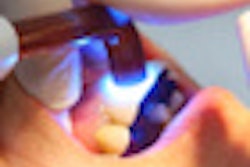
Do dental patients find a space between the two upper front teeth bothersome? Do they prefer square or square-round incisors?
These questions and more are addressed in a new study that looked at laypeople's preferences regarding dental aesthetics (Journal of the American Dental Association, June 2011, Vol. 142:6, pp. 635-645).
Researchers from the University of Alberta conducted a systematic search of electronic databases, including Medline, PubMed, Embase, Cochrane Library, and Web of Science up until May 2010. They identified and selected articles in which investigators explored anterior dental aesthetics from a layperson's perspective, and assigned methodological scores to the studies. Seventeen articles met their inclusion criteria.
“Clinicians' perceptions appear to be significantly different from those of patients.”
— Carlos Flores-Mir, DDS
The study authors found that laypeople have varying degrees of sensitivity to certain dental aesthetic issues, and that clinicians can expect their patients to be more attentive to some aesthetic factors than to others.
Although there has been plenty of research on factors that affect anterior dental aesthetics, there is no consensus on laypeople's perspectives on these factors, the authors noted.
"I have always followed with particular interest the apparent discrepancy between what clinicians consider an adequate aesthetic result in comparison to what the patient's aesthetic threshold really is," said Carlos Flores-Mir, DDS, and associate professor and head of the division of orthodontics at the University of Alberta, in an interview with DrBicuspid.com
Although the lay public is able to identify some factors that have an effect on what is considered an aesthetic smile, they are less critical than dental care professionals regarding these factors, the authors noted.
Tooth-related factors
The goal of this study was to collect and analyze all the available information about laypeople's preferences regarding frontal dentofacial aesthetics, explained Dr. Flores-Mir. The study focuses exclusively on tooth-related factors: tooth shape, tooth size, tooth proportion, and incisor position.
As part of the literature review, the authors set a criterion that would result in a homogeneous sample of opinions solely from a layperson's perspective regarding another person's dentoalveolar and facial appearance. They found that laypeople did not discriminate between square, square-round, and round incisors or between canine shapes in females, but that they preferred square-round incisors to square incisors and flat canines in males.
Other study findings included the following:
- Most laypeople appear to prefer unworn dentitions, small teeth in females, and large teeth in males.
- Most detect variations in crown width or height among individual teeth.
- A 10° angulation of one or both central incisors is considered less attractive than a 2° angulation.
- The majority of laypeople preferred a 1.4-mm step between the incisal edges of maxillary central and lateral incisors, but they tolerated a maximum step of 2.9 mm.
- Most laypeople had a preference for no diastemas and tended to notice a diastema larger than 1 mm.
"For some of the factors there is controversy, so we did attempt to -- by comparing all the available information -- to determine where the truth lied," Dr. Flores-Mir explained. "At the end of the day, however, we came to the conclusion that it is not an exact science but an informed decision-making process."
Because laypeople have varying degrees of sensitivity to certain aesthetic issues, clinicians need to be aware that even if this study states that up to 1 mm of midline diastema is acceptable for laypeople in general, some people can still find that 1 mm bothersome, he added.
In addition, clinicians can expect their patients to be more attentive to some aesthetic factors than to others, and not every patient will find the same factors important, he noted.
"For some of the factors considered, clinicians' perceptions appear to be significantly different from those of patients," Dr. Flores-Mir said. "So it is key to consider in any treatment planning not only the clinician's opinion but also the patient's values and opinions."
A related study that focuses on peri-dental factors will be published in the August issue of JADA, and future research by the authors will focus on other factors, such as periodontal (midline deviation, smile arc, buccal corridors, occlusal plane orientation, and gingival display) and optical factors (tooth shade and translucency), he noted.



















